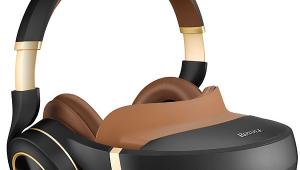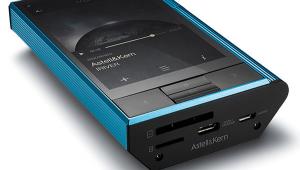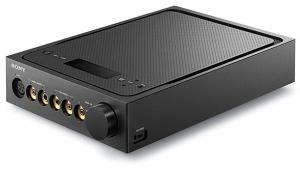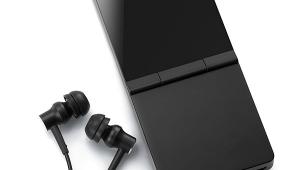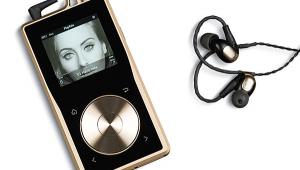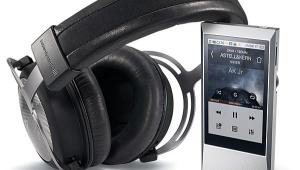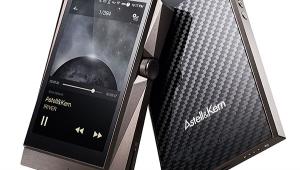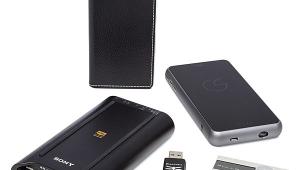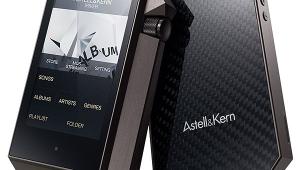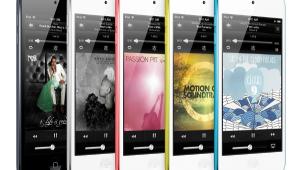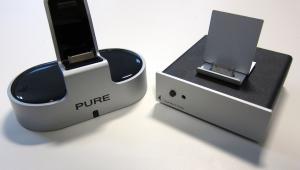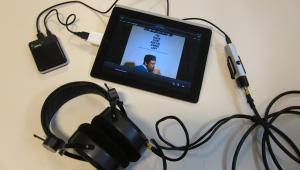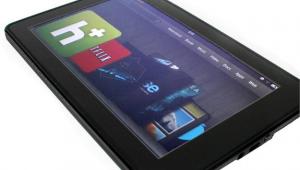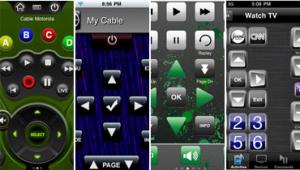iPad: The High-Rez Digital Transport for the Rest of Us? Page 2
iTunes? We Don't Need No Stinkin' iTunes
The current version of Music, the iPad's stock audio playback app, is limited (as is the iPad itself, at least officially) to 24-bit, 48 kHz playback. Not too shoddy - out of the box, the device supports better-than-CD quality audio (though not hugely better - the iPad's headphone out does downsample to 16-bit). But a major quibble for audiophiles is that Apple products don't natively support FLAC, the open-source lossless audio codec of choice for major high-resolution retailers like HDtracks. If you want lossless playback, you'll have to convert your purchased files to Apple's own Apple Lossless Audio Codec (ALAC) format. Again, not a fate worse than death, but for those with large collections of high-rez music (those files are big) conversion represents a significant time (and storage space) suck.
Attempting to load higher-rez files directly into Music via iTunes will get you nowhere; your attempts will be rejected by the OS. But there's hope, on two fronts.
If you don't absolutely need to have your music library on your iDevice (say you tend to use your iPad around the house, with headphones on), Apple's Home Sharing will let you stream high-resolution files (up to and including 24-bit, 96 kHz ALAC) from your desktop machine to your iPad. Simply activate Home Sharing on your primary machine; sign in to the same wireless network with your iPad and sign into Home Sharing (the dialog box you're looking for is under Settings/Music) there as well. Voila! You'll find you have access to the high-rez content in your desktop library.
Should you want direct support for FLAC on your iPad, Dan Leehr's FLAC Player app ($9.99, hammockdistrict.com) is the ticket. It's a stripped-down player that'll let you play (and manage, to a limited extent) your FLAC collection on your iPad (or other iDevices, so long as you're running iOS 4 or up), smoothly
Getting your FLACs onto your iPad is accomplished via iTunes, and is nearly as simple as using the standard Music library interface. Once you've installed the app, you sync your tablet, navigate on over to "Apps," scroll down to File Sharing, choose the FLAC Player Tab, and drag-and-drop as usual. The app reads metadata and organizes your files, as you'd expect, by artist and album. Your iPad and copy of iTunes will see your added FLACs as part of the app's memory burden, so you can't manage the files along with your MP3/AAC library (should you have such things).FLACs are large enough that you're not going to have the opportunity to run into big library management problems - you'll put a few favorites on at a time - so as long as you have your desktop file management sorted out, you should be good to go.
In practice, it works pretty smoothly. With iOS 4 and 5, you can enjoy lossless playback in the background, while doing whatever other basic tasks you should be doing. Since the app is decoding FLACs in software, the developer warns of possible playback if your tablet's busy with other labor-intensive processes, but this wasn't a problem for us in testing.
Whether you're listening to streamed ALAC or local FLAC, your device will be downsampling on output to 16/48. Of course, there's a workaround for that too.
